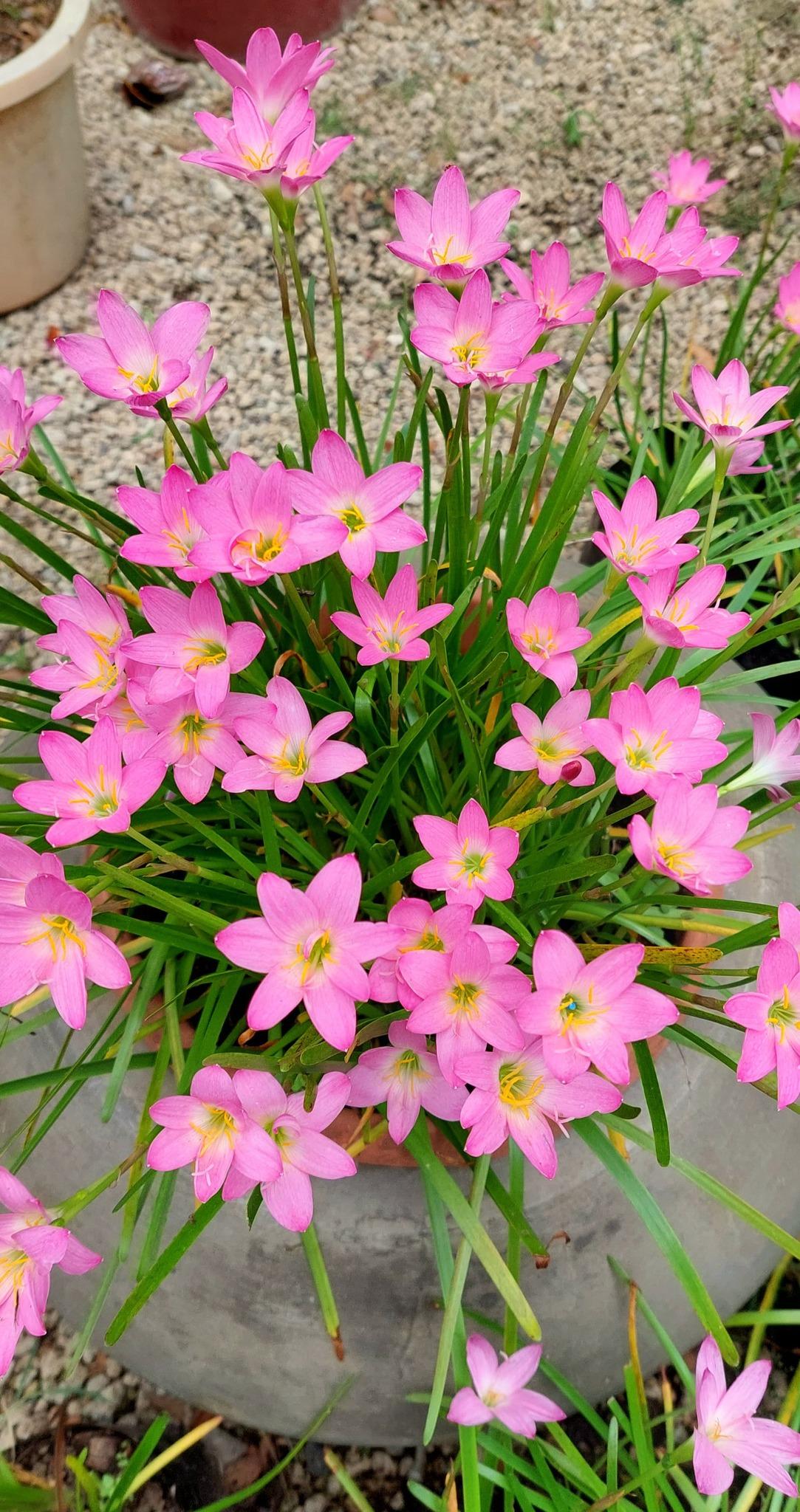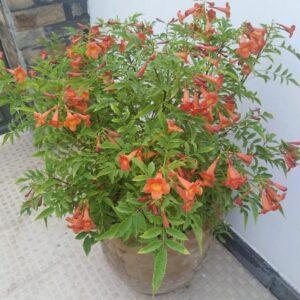Rain Lily (Zephyranthes spp.) – The Surprise Bloomer of the Garden
The Rain Lily, also known as Zephyranthes, is a charming, bulbous perennial that seems to magically bloom after rainfall, giving it its common name. Known for their delicate, star-shaped flowers, Rain Lilies are native to the Americas, but have been widely adopted in Asia, especially in India and Southeast Asia, for their low maintenance, compact size, and burst of color in the monsoon season.
Rain Lilies are typically planted in masses or borders and are also suited to pots, lawns, or wildflower-style gardens. Their dainty beauty and sudden flowering make them garden favorites across warm climates.
🌿 General Description
Botanical name: Zephyranthes spp.
Common names: Rain Lily, Fairy Lily, Zephyr Lily, Rain Flower, Monsoon Lily
Plant type: Bulbous perennial
Height: 6–12 inches (15–30 cm)
Spread: 4–6 inches per bulb; naturalizes over time
Foliage: Grass-like, narrow green leaves
Flowers: Star-shaped, trumpet or crocus-like blooms; usually pink, white, or yellow depending on species
Bloom time: After rain showers, mostly from late spring to early autumn
💧 Watering Routine
Rain Lilies love moisture—especially after dry spells.
Active growing/blooming season (monsoon & summer):
Water thoroughly after the soil dries out slightly.
They respond best to watering that mimics rainfall—deep and occasional.
Too much watering during dormancy may cause bulb rot.
Dormant season (late autumn to winter):
Reduce watering to once every 2–3 weeks or stop completely in colder climates.
🪴 Container tip: Ensure pots have excellent drainage. Never let bulbs sit in soggy soil.
☀️ Light and Temperature Requirements
Light:
Thrives in full sun to partial shade.
At least 4–6 hours of direct sunlight is ideal.
In very hot regions, light afternoon shade is beneficial.
Temperature:
Best in 20–32°C (68–90°F).
Hardy in USDA Zones 7–11.
In cooler climates (below 5°C / 41°F), bulbs may go dormant or need to be dug up and stored indoors.
🌱 Soil and Fertilizer Needs
Soil:
Prefers well-draining loamy or sandy soil.
Avoid compacted, heavy clay soils unless amended with compost and sand.
pH: Slightly acidic to neutral (6.0–7.0)
Fertilizer:
Feed bulbs once every 4–6 weeks during growing season.
Use:
A balanced liquid fertilizer (e.g., 10-10-10), or
Organic options like compost tea or diluted cow dung solution
Stop feeding during winter dormancy.
💡 Too much nitrogen may result in lush foliage but fewer blooms.
✂️ Pruning and Maintenance
Deadheading: Remove spent blooms to tidy the plant and encourage more flowering.
Foliage: Let the leaves yellow and die back naturally after the season—they help replenish the bulb for next year.
Divide clumps every 2–3 years to avoid overcrowding and maintain strong blooming.
🧹 Keep soil loose and weed-free around the bulbs to ensure good air circulation.
🌸 Propagation
Rain Lilies propagate easily by:
Bulb Division:
Best done in early spring or post-blooming season.
Gently lift the clump, separate offset bulbs, and replant them 2–3 inches deep.
Seeds:
Can be collected from dried flower heads.
Sow in moist soil and keep lightly shaded.
Seed-grown plants may take 1–2 years to flower.
🌱 Tip: Most gardeners prefer bulbs for faster and more reliable blooming.
🐛 Pests and Problems
Rain Lilies are generally pest-resistant, but may occasionally face:
Snails and slugs – especially in rainy climates.
Bulb rot – due to overwatering or poor drainage.
Spider mites or aphids – rarely, on indoor or container plants.
🛡️ Control with neem oil, organic sprays, and good hygiene.
🎍 Landscape Uses
Perfect for edging, borders, and under trees
Ideal in mass plantings for a natural look
Great for containers and window boxes
Lovely in rock gardens and wildflower patches
Because of their sudden blooming, Rain Lilies are often used for surprise pops of color or planted with other summer-blooming perennials for layering effects.
✅ Conclusion
The Rain Lily is a charming, easy-care bulb that rewards minimal effort with surprising bursts of beautiful flowers after rain. With their compact size, resilience, and ability to multiply over time, Rain Lilies are a fantastic addition to any garden. Plant them once, and they’ll keep returning—just like the monsoon.”




Reviews
There are no reviews yet.